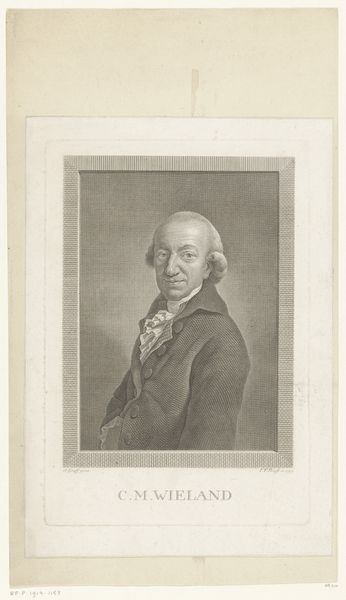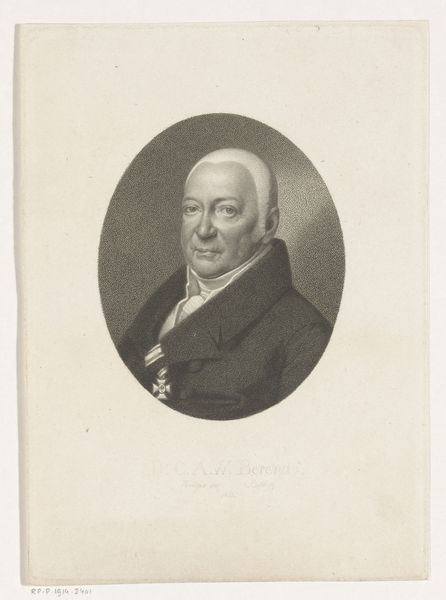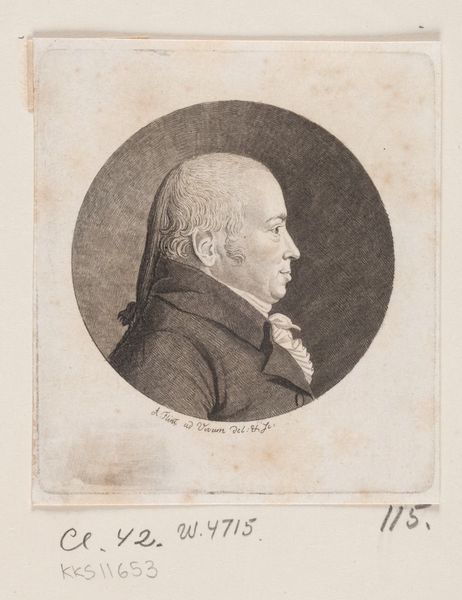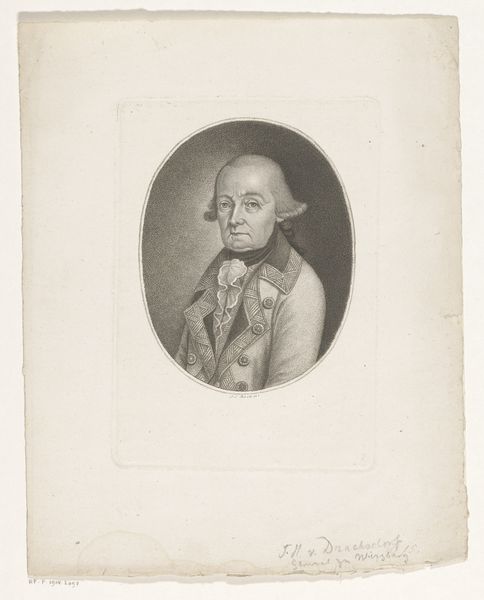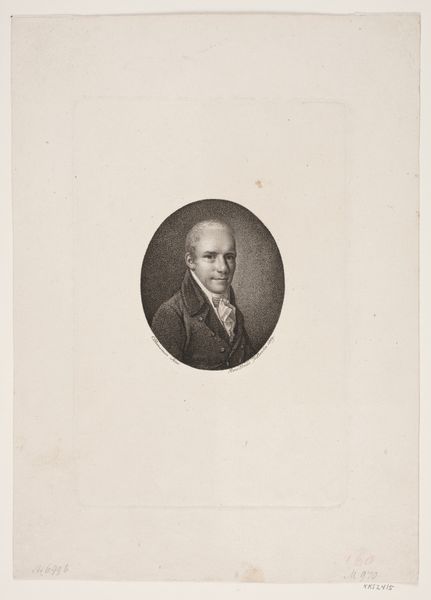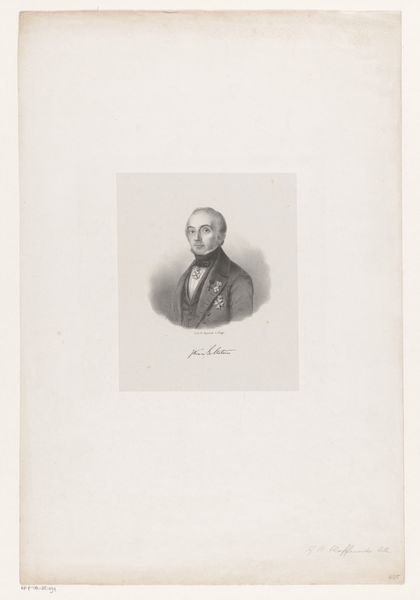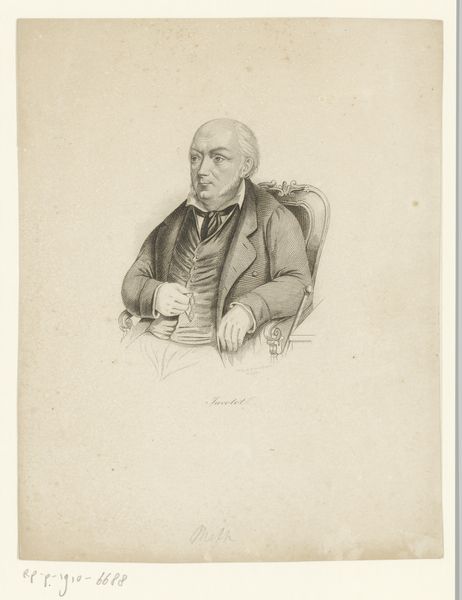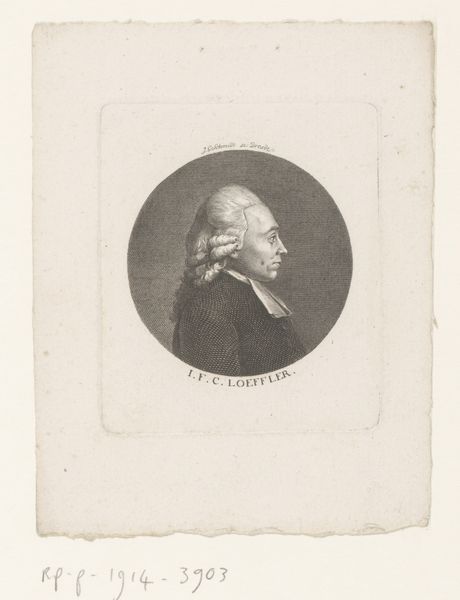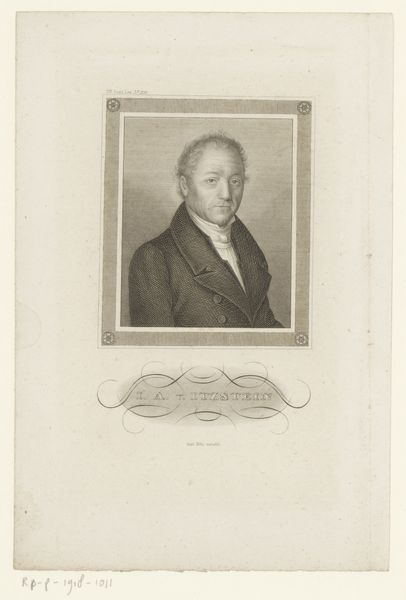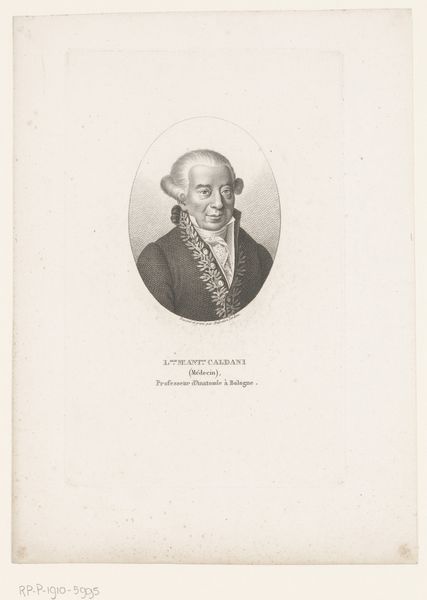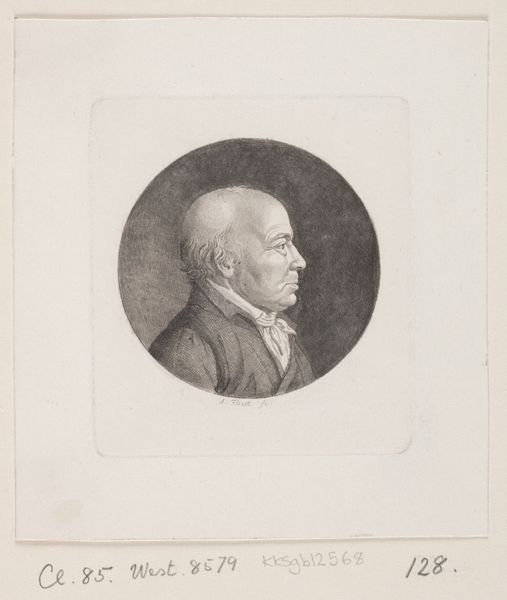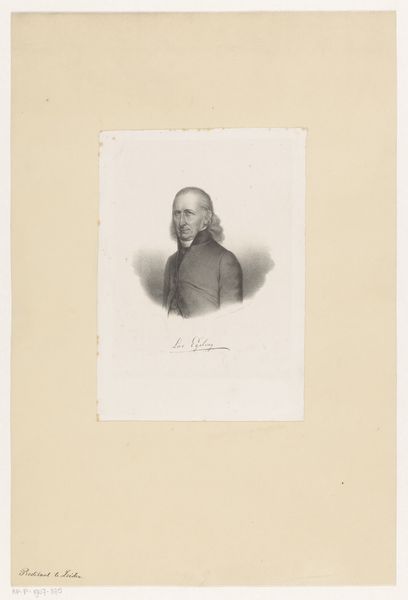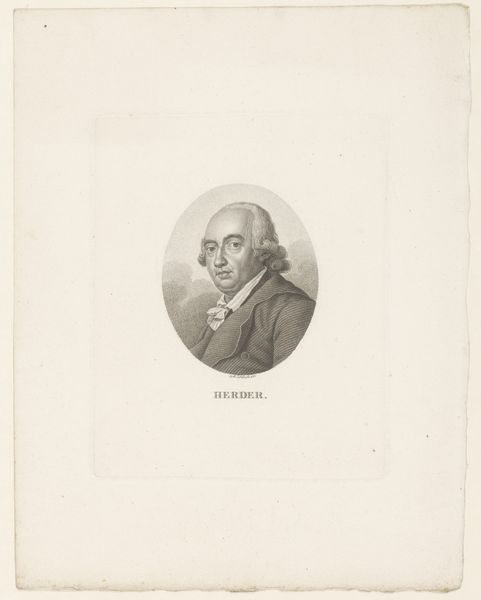
print, engraving
#
portrait
#
neoclacissism
# print
#
19th century
#
engraving
Dimensions: height 303 mm, width 244 mm
Copyright: Rijks Museum: Open Domain
Leonhard Schlemmer made this portrait of Johann Heinrich Jung-Stilling using a technique called etching, where lines are incised into a metal plate with acid, then inked and printed. Look closely and you’ll notice the fineness of the lines, especially in the face. The tonal range achieved by this process gives the portrait depth and a sense of presence. But what does this technique tell us about the world at the time? Etching allowed for relatively quick reproduction and distribution, reflecting an emerging commercial market for images. The labor involved—from the etcher's hand to the printing press—speaks to a changing economy. The mechanization of printing allowed for greater distribution, aligning with broader trends of industrialization. Schlemmer's etching thus encapsulates the intersection of artistic skill, technological advancement, and the growing commodification of images in the late 18th and early 19th centuries. It blurs the lines between fine art, craft, and industry.
Comments
No comments
Be the first to comment and join the conversation on the ultimate creative platform.
